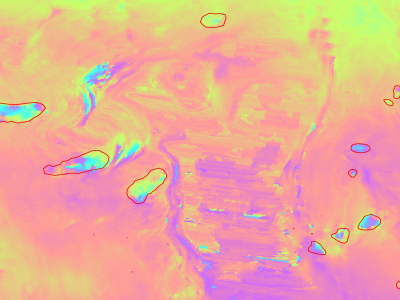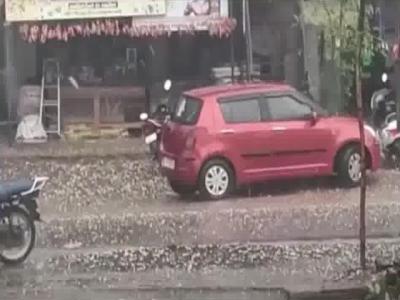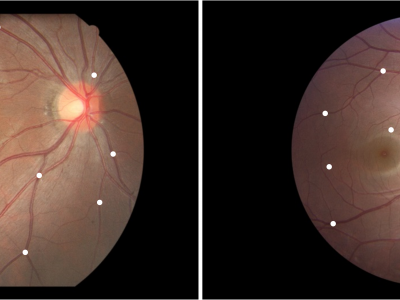Image Processing
Slow moving motions are mostly tackled by using the phase information of Synthetic Aperture Radar (SAR) images through Interferometric SAR (InSAR) approaches based on machine and deep learning. Nevertheless, to the best of our knowledge, there is no dataset adapted to machine learning approaches and targeting slow ground motion detections. With this dataset, we propose a new InSAR dataset for Slow SLIding areas DEtections (ISSLIDE) with machine learning. The dataset is composed of standardly processed interferograms and manual annotations created following geomorphologist strategies.
- Categories:
 883 Views
883 Views
The "ShrimpView: A Versatile Dataset for Shrimp Detection and Recognition" is a meticulously curated collection of 10,000 samples (each with 11 attributes) designed to facilitate the training of deep learning models for shrimp detection and classification. Each sample in this dataset is associated with an image and accompanied by 11 categorical attributes.
- Categories:
 1079 Views
1079 ViewsLight-matter interactions within indoor environments are significantly depolarizing. Nonetheless, the relatively small polarization attributes are informative. To make use of this information, polarized-BRDF (pBRDF) models for common indoor materials are sought. Fresnel reflection and diffuse partial polarization are popular terms in pBRDF models, but the relative contribution of each is highly material-dependent and changes based on scattering geometry and albedo.
- Categories:
 135 Views
135 ViewsRecognizing and categorizing banknotes is a crucial task, especially for individuals with visual impairments. It plays a vital role in assisting them with everyday financial transactions, such as making purchases or accessing their workplaces or educational institutions. The primary objectives for creating this dataset were as follows:
- Categories:
 316 Views
316 ViewsThis dataset contains video-clips of five volunteers developing daily life activities. Each video-clip is recorded with a Far InfraRed (FIR) camera and includes an associated file which contains the three-dimensional and two-dimensional coordinates of the main body joints in each frame of the clip. This way, it is possible to train human pose estimation networks using FIR imagery.
- Categories:
 439 Views
439 ViewsWe present RRODT, a real-world rainy video dataset for testing the efficacy of deraining methods to help downstream object detection and object tracking. RRODT is composed of 57 videos and totally 10258 frames. It consists of two kinds of annotations. One set of annotation contains 33077 objects for detection. The other set contains 408 unique objects for tracking.
- Categories:
 10 Views
10 ViewsFundus Image Myopia Development (FIMD) dataset contains 70 retinal image pairs, in which, there is obvious myopia development between each pair of images. In addition, each pair of retinal images has a large overlap area, and there is no other retinopathy. In order to perform a reliable quantitative evaluation of registration results, we follow the annotation method of Fundus Image Registration (FIRE) dataset [1] to label control points between the pair of retinal images with the help of experienced ophthalmologists. Each image pair is labeled with
- Categories:
 218 Views
218 ViewsSYPHAXAR dataset is a dataset for Arabic text detection in the wild. It was collected from Tunisia in “Sfax” city, the second largest Tunisian city after the capital. A total of 3078 images were gathered through manual collection one by one, with each image energizing text detection challenges in nature according to real existing complexity of 15 different routes along with ring roads, intersections and roundabouts. These annotated images consist of more than 31000 objects, each of which is enclosed within a bounding box.
- Categories:
 242 Views
242 Views
Point cloud streaming has recently attracted research attention as it has the potential to provide six degrees of freedom movement, which is essential for truly immersive media. The transmission of point clouds requires high-bandwidth connections, and adaptive streaming is a promising solution to cope with fluctuating bandwidth conditions. Thus, understanding the impact of different factors in adaptive streaming on the Quality of Experience (QoE) becomes fundamental. Point clouds have been evaluated in Virtual Reality (VR), where viewers are completely immersed in a virtual environment.
- Categories:
 103 Views
103 Views






